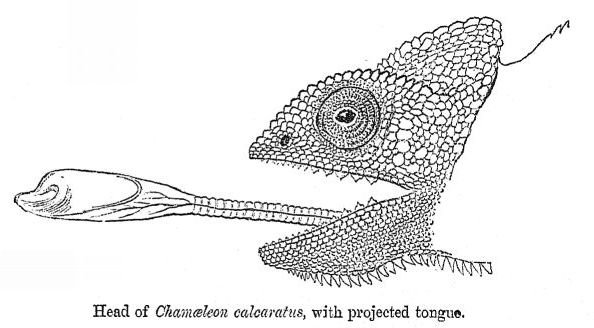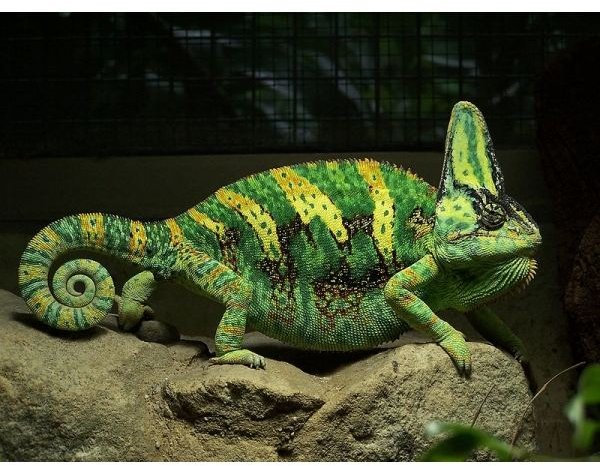The Fascinating Chameleon: Facts About Its Physical Traits, Diet, Reproduction and Lifespan
The Changing Colors
There are over a hundred different species of chameleons in the world and about half of them live in Madagascar (an island off the southeastern coast of Africa). It is the largest community of chameleons in the world and there are about 60 species that live only in Madagascar.
Description
Chameleons vary in size and body structure. The smallest is just a bit over 1 inch and the largest is about 27 inches. They come in a variety of colors and many have ornamental features on their head or face (like “horns”). Males are normally more flashy than females.
Color
Chameleons have special cells (called chromatophores) that lie under their outer skin. These cells contain pigments, including the colors red, yellow, blue, and white. The brain tells the cells to shrink or enlarge, causing the pigments to mix (like paint), thus causing their color to change. Melanin also plays a role in color change by darkening the skin.
Many people believe the chameleon changes color to blend in with their environment. Scientists disagree with this. Studies have shown that mood, temperature, and light causes their color to change.

Tongue
The tongue is another interesting feature of the chameleon. The tip of their tongue is covered with a sticky secretion that grabs its prey. They can “shoot out” their long tongue (which can be as long as their body) and have their prey in their mouth in a fraction of a second (faster than what the human eye can see). They can repeat this action immediately afterwards.
Eyes
The chameleon can move one eye in one direction while moving the other eye in a different direction. It also has the ability to view its surrounding with nearly 360° vision.

Feet & Tail
Chameleons have 5 toes on each foot (2 are fused together and 3 are fused together). This helps them to get a good grip (like vices) around branches. They can also wrap their tail around branches to help them hang on.
Behavior
When frightened, the chameleon can make a hissing sound. They can bite (which is non-toxic and harmless).
Habitat
Chameleons live in a variety of habitats, including montane and tropical rainforests, savannahs, and semi-deserts. Most live in trees and bushes. Some small species will live on the ground underneath foliage.
Diet
The chameleon primarily eats small and large insects.
Reproduction
Chameleons lay eggs. Females will dig a hole in the ground, deposit her eggs, and bury them. The gestation period and number of eggs vary with species.
Lifespan
The lifespan varies among species. Normally they live 5-9 years.
Pets
Although there are many fun and interesting facts about the chameleon, it is recommended by some to not keep them as pets because they are hard to care for in captivity.
Sources Used
https://www.reptileknowledge.com/squamata/chamaeleonidae.php
https://www.switcheroozoo.com/profiles/chameleon.htm
https://www.auroville.org/environment/web_of_life/chameleons.htm
https://magma.nationalgeographic.com/ngexplorer/0210/articles/mainarticle.html
Photo Credit
Panther Chameleon image courtesy of https://commons.wikimedia.org/wiki/File:Panther_Chameleon_(Furcifer_pardalis).jpg
Chameleon’s tongue image courtesy of https://commons.wikimedia.org/wiki/File:Chameleon_gab_fbi.png
Yemen Chameleon image courtesy of https://commons.wikimedia.org/wiki/File:Yemen_Chameleon.jpg
